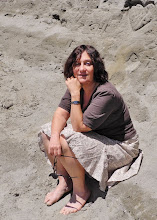Inspired by this video of Ana Chumachenko's engaging masterclass at Verbier Festival Academy of Mozart Violin Concertos Nos 3, 4 and 5, I've had Mozart on my mind. Fortunately, I have a crop of talented students eager to immerse themselves in the concertos. There was a time when I wasn't so lucky. For a sad period my students felt Mozart beneath them. I didn't know whether to laugh or cry, beat an egg in a bowl or throw it against the wall. No matter how much I complained and cajoled, I was left with mainly teenagers hungry to pursue only Romantic repertoire, and with attitude, of course. But this has happily changed. I'm looking forward to a Talvi Studio recital in the spring which will feature many of Mozart's compositions.
I'm of the opinion that learning the style of Mozart is best attained in childhood with excellent training. I was fortunate to have had a most wonderful teacher in Sarah Scriven at the Boston Music School. And my mother nourished me with Mozart's music as a steady diet. In fact, she was so eager to have me study the concertos that in 1964 (mind you, I was only five years of age), my mother purchased "A Treatise on the Fundamental Principles of Violin Playing" by Leopold Mozart and gave it to me as a Chanukah present. Although Leopold's treatise didn't impress me then (I preferred Dr. Seuss and Beatrix Potter), to this day I consider the book, first published in 1756, a violinist's Bible. In translator Editha Knocker's introduction, she explains: The great, and I think the most important, difference between Leopold Mozart's teaching and the teaching of our own times is his insistence that each lesson be perfected before the next step is taken. He warns the teacher against letting the pupil play before he knows the rules of playing. He stresses the vital importance of correct bowing, and he gives a sound and logical reason for each rule.
We might easily recognize how it came to be that Wolfgang Amadeus Mozart, admittedly supra-naturally gifted, developed into such a fine violinist by dint of his father's detailed instruction and thorough knowledge of the instrument. Everyone who understands even a little of the art of singing, knows that an even tone is indispensable, Leopold writes in his treatise. After performances of his Concerto in G Major, K.216 in Munich and Augsburg, Mozart wrote his father, anno 1777: I played as though I were the finest fiddler in Europe. It went like oil and everybody praised my beautiful, pure tone.
And purity of tone and stylistic nuance is what violinist Ana Chumachenko, professor at the Hochschule in Musik in Munich and Gold Medalist of the 1963 Carl Flesch International Competition, illumines through her playing and instruction on this Masterclass Media Foundation DVD. Through skillful demonstration, she emphasizes the necessity of economical gestures, quick shifts in character, the translation of technic into a joyful but not aggressive sound, and conscious vibrato as a means to enhance or open the violin's voice as a singer would do. "Play the dynamic of piano so that it fills every corner of the room," she advises one student. Chumachenko possesses an innate sense of musical line, of direction, and shading. "The gestures are too large," she warns young violinist, Ania Filochowska. "It's as if you're trying to move heavy furniture. You must stand quietly and learn what they call—technique. This way you'll develop more and more freedom." Her own outstanding pupils are proof of this credo. Chumachenko's musical progeny include Lisa Batiashvili, Elina Vähälä, Mark Gothoni, Julia Fischer, and Sarah Chang.
After a duration of two hours, the masterclass with Ana Chumachenko at Verbier Festival Academy draws to a close. "How should I phrase in Mozart?" she asks with a gentle smile, as if thinking aloud. "You just have to listen. It's all there in the music. Easy, yeah? Good."
Wednesday, January 4, 2012
Subscribe to:
Post Comments (Atom)

No comments:
Post a Comment